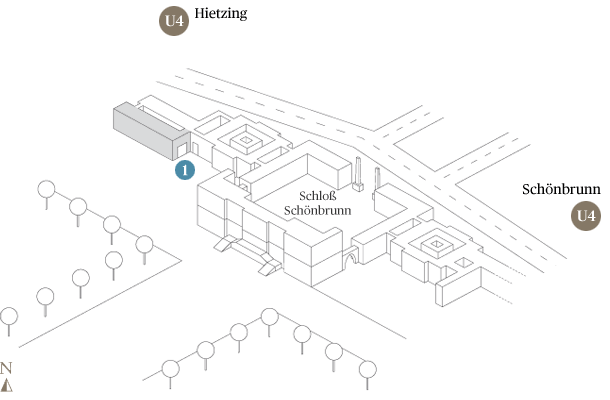
Maria Theresa
Strategist – Mother – Reformer
A major new exhibition marking the third centenary of the birth of Maria Theresa explores the life and work of this monarch and empress-consort. The Maria Theresa exhibition will be taking place from 15 March to 29 November 2017 at four locations in Vienna and Lower Austria. One of the outstanding personalities from the House of Habsburg, she assumed an almost mythical status a short time after her death in 1780. The exhibition Maria Theresa: Strategist – Mother – Reformer presents a nuanced exploration of the bright and dark sides of the ruler, examining her life, family, political achievements and legacy.
Imperial Carriage Museum Vienna
High Office and High Spirits
The Imperial Carriage Museum is taking a completely new look at Empress Maria Theresa to commemorate the 300th anniversary of her birth. The exhibition focuses not on politics and wars, but on Maria Theresa’s high spirits, her celebrations, and the image she cultivated of herself between the conflicting priorities of female identity and “male” sovereignty. While other female rulers of her time presented themselves as “surrogate men”, Maria Theresa always emphasized her femininity, and won the hearts of her subjects precisely by doing so. Her people admired the beautiful young woman who not only worked tirelessly and gave birth to children year after year, but who also loved dancing, celebrating, excursions, and riding out, all of which she did with great gusto. The exhibition resurrects the splendour of her age by means of paintings, state coaches, sumptuous garments, and riding harnesses, all presented in combination with new media.
“High Office” and “Men’s World”
Maria Theresa naturally made use of her sovereign rights, defending them vehemently against all attacks, but she also always accepted that she was just an exception in an otherwise inviolable world order. As a result, she transcended the restrictions that the society of her day imposed on women without ever intrinsically challenging them. The exhibition reveals how masterfully she managed to maintain her feminine identity, whilst nevertheless displaying the distinctly “masculine” virtues of a sovereign ruler. As a result, she was persuasive both as a mother who provided for the continuation of the male line of succession and as a ruler, reformer and supreme commander.
High spirits and spectacle
It was well known fact that the young Maria Theresa took great delight in celebrating, playing, dancing and carriage excursions. Her favourite pastimes also included riding. One of the highlights of the exhibition is the monarch’s baroque riding gear, on display to the public for the first time. It includes a magnificent curb bit decorated with reliefs of the imperial couple.
The ladies’ carousel attests to the close link between pleasure and politics. During the War of the Austrian Succession, this extravagant public spectacle enabled Maria Theresa to demonstrate both subtly and effectively that she could hold her own in the traditional male martial disciplines. In the exhibition, visitors can experience this unique event thanks to a virtual installation revolving around the magnificent golden carousel carriage.
The extensive sleigh rides that court society enjoyed during the winter were also part of the empress’s projection of herself. An opulent procession of elaborate sleighs with bell harnesses shows just how impressive they were.
State coaches as symbols of power
Since the ordinary people generally only saw their ruler riding in a carriage, the design of state coaches was always of the utmost importance. Taking over the carriage of a predecessor or opponent and the resulting modification of insignia and iconography were important symbols of acquisition of power. Maria Theresa had her father’s state coach decorated with new images alluding to her identity as a female ruler. The mother of sixteen also had fashionable carriages built for her many children. These Berlin coaches enabled the dynasty to showcase highly effectively its impressive personal strengths during public appearances. The Maria Theresa exhibition not only shows for the first time a procession of these carriages with the original harnessing, but also displays astonishing restoration work.
For further information on the other topics and locations as well as for the exhibition programme please visit: http://www.mariatheresia2017.at/en





